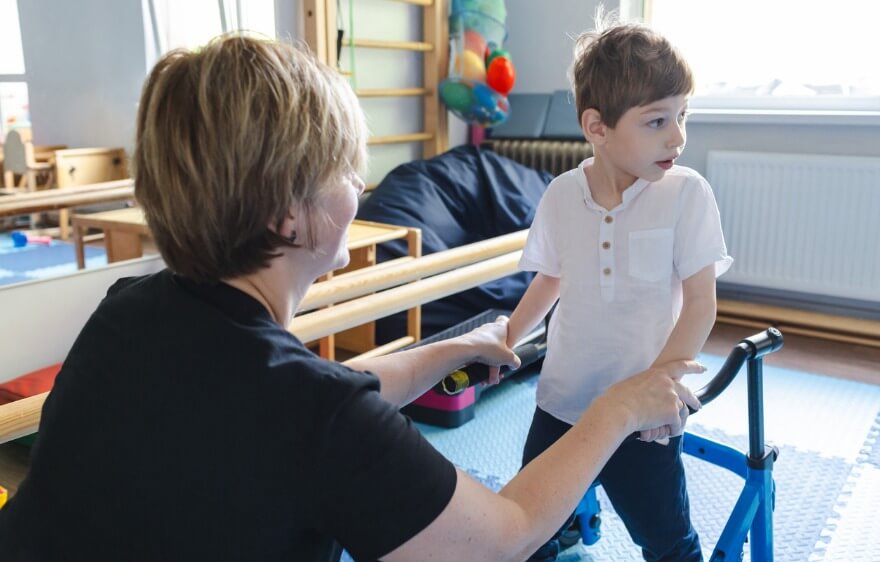In the realm of mental health treatment, Cognitive Behavioral Therapy (CBT) has emerged as a powerful and widely practiced therapeutic approach. CBT has gained popularity for its effectiveness in addressing a myriad of mental health issues by focusing on the connection between thoughts, feelings, and behaviors. In this blog post, we will delve into the depths of CBT therapy, exploring its principles, techniques, and applications.
Understanding the Basics of CBT
Foundations of CBT
Cognitive Behavioral Therapy is rooted in the idea that our thoughts, emotions, and behaviors are interconnected. Developed by Aaron T. Beck in the 1960s, CBT aims to identify and modify negative thought patterns that contribute to emotional distress and problematic behaviors.
Collaborative and Goal-Oriented
CBT is a collaborative and goal-oriented therapy. Clients work closely with their therapists to set specific, measurable, achievable, relevant, and time-bound (SMART) goals. This structured approach allows for a focused and systematic exploration of the client’s concerns.
Present-Focused
Unlike some therapeutic approaches that delve extensively into past experiences, CBT is primarily present-focused. It aims to identify and change current patterns of thinking and behavior that contribute to distress, providing practical tools for immediate application.
The Core Principles of CBT
There are many core principles of CBT. They include:
- Cognitive Restructuring: Central to CBT is the process of cognitive restructuring, where individuals learn to identify and challenge negative or distorted thoughts. By replacing these thoughts with more balanced and realistic ones, individuals can alter their emotional responses and behaviors.
- Behavioral Activation: CBT often incorporates behavioral activation, encouraging individuals to engage in activities that bring them a sense of pleasure or accomplishment. This can be particularly beneficial for individuals dealing with depression or anxiety, helping them break the cycle of avoidance and withdrawal.
- Exposure Therapy: In cases of phobias or anxiety disorders, CBT may employ exposure therapy. This involves gradually and safely exposing individuals to feared stimuli, allowing them to confront and overcome irrational fears.
- Skills Training: CBT equips individuals with a toolkit of practical skills to manage stress, cope with challenging emotions, and navigate interpersonal relationships. These skills may include relaxation techniques, assertiveness training, and problem-solving strategies.
Applications of CBT
Depression and Anxiety
CBT has demonstrated efficacy in treating depression and anxiety disorders. By addressing negative thought patterns and promoting behavioral changes, individuals can experience significant relief from symptoms.
Trauma and PTSD
For individuals who have experienced trauma or suffer from post-traumatic stress disorder (PTSD), CBT can be a valuable therapeutic tool. It helps individuals process traumatic experiences and develop coping strategies to manage associated symptoms.
Obsessive-Compulsive Disorder (OCD)
CBT, particularly a specialized form called Exposure and Response Prevention (ERP), is considered a first-line treatment for OCD. It involves gradually exposing individuals to their obsessive fears and preventing the accompanying compulsive behaviors.
Chronic Pain Management
CBT has proven effective in managing chronic pain by addressing the psychological aspects of pain perception. It helps individuals develop adaptive coping mechanisms and reduce the impact of pain on their daily lives.
Eating Disorders
In the treatment of eating disorders such as bulimia nervosa and binge-eating disorder, CBT has shown positive outcomes. It focuses on challenging distorted beliefs about body image and establishing healthier eating patterns.
Challenges and Considerations
The challenges and considerations of CBT include:
- Time and Commitment: While CBT is often considered a relatively short-term therapy, achieving lasting change requires commitment and effort. Clients are encouraged to actively engage in between-session activities and practice newly acquired skills in their daily lives.
- Not One-Size-Fits-All: CBT is a flexible approach, but it may not be the best fit for everyone. Individual preferences, cultural factors, and the nature of the presenting concerns can influence the suitability of CBT as a therapeutic modality.
- Therapist-Client Relationship: The therapeutic relationship is essential in any form of therapy, including CBT. Establishing trust and rapport with the therapist is crucial for successfully implementing CBT techniques.
Incorporating CBT into Your Life
You can incorporate CBT into your life by:
- Self-Help Resources: Numerous self-help resources, including books, workbooks, and online programs, are available for individuals interested in incorporating CBT principles into their lives. These resources provide practical exercises and tools for self-reflection.
- CBT Apps: In the digital age, there’s a growing number of mobile apps designed to deliver CBT-based interventions. These apps offer users a convenient way to access therapeutic tools and track their progress in real-time.
- Workshops and Groups: Participating in CBT workshops or group therapy sessions can provide additional support and a sense of community. These settings allow individuals to share their experiences, learn from others, and practice CBT techniques in a supportive environment.
Cognitive Behavioral Therapy stands as a beacon of hope for individuals grappling with a wide array of mental health challenges. Its evidence-based approach, emphasis on collaboration, and focus on practical, actionable strategies make it a cornerstone in psychotherapy. Whether you’re seeking professional guidance or exploring self-help resources, the principles of CBT offer a roadmap for understanding and transforming the intricate relationship between your thoughts, emotions, and behaviors. As you embark on your journey toward mental well-being, the empowering tools of CBT may very well be the compass you need to navigate the path ahead.
Join the Care Options For Kids Team!
Are you ready for meaningful work that comes with benefits and not burnout? Join the compassionate care team that helps children and families live their best lives. Our clinicians provide best-in-class pediatric nursing, therapy, and school-based services. We bring individualized care to children where they live, work, and play. We have opportunities in homes, schools, and clinics across the country.
Apply at Care Options for Kids now. We make it easy to get started, so you can begin making a difference as soon as possible.






